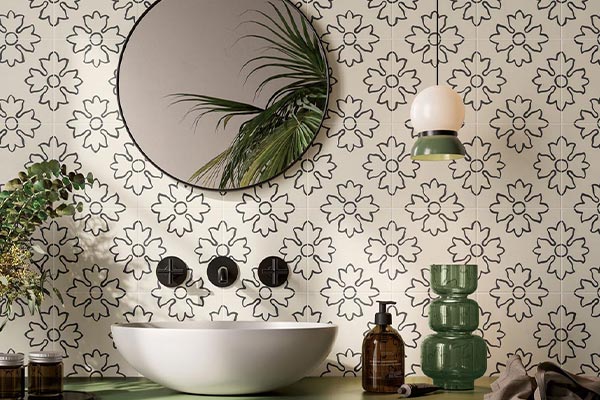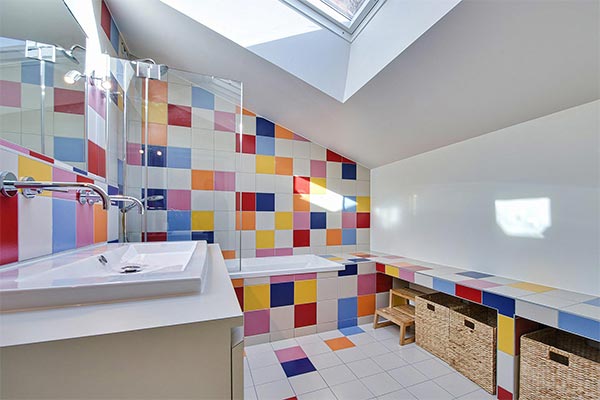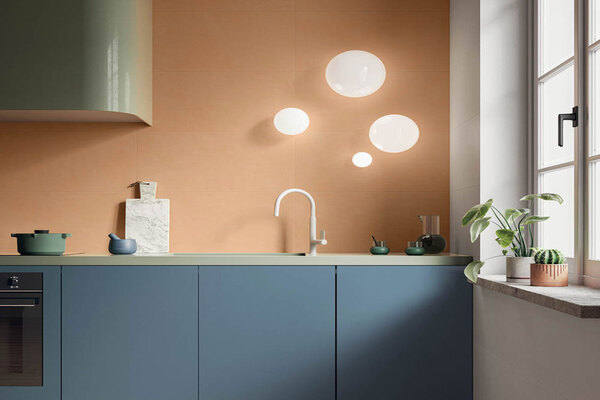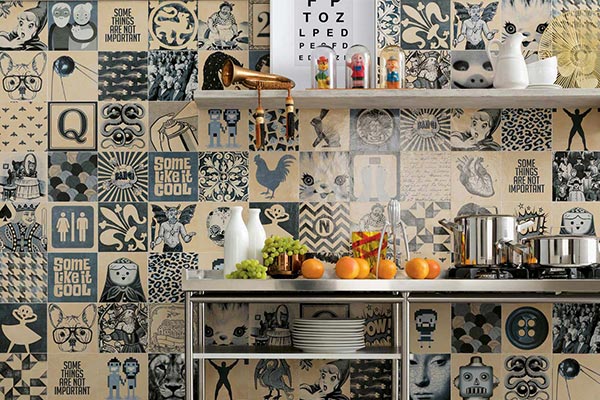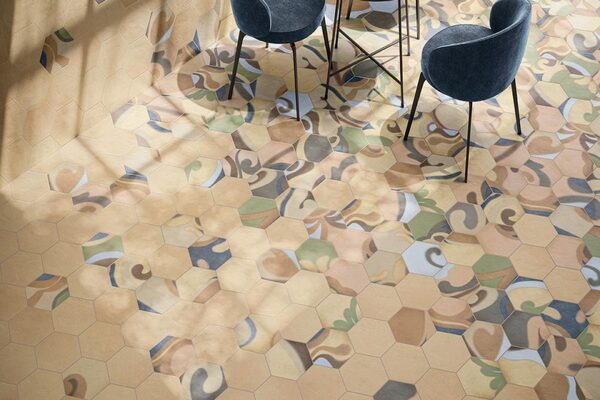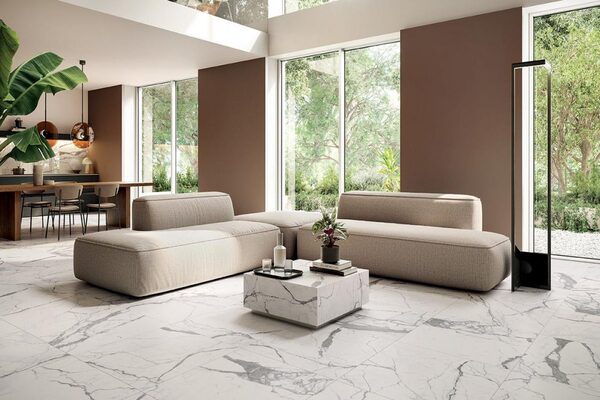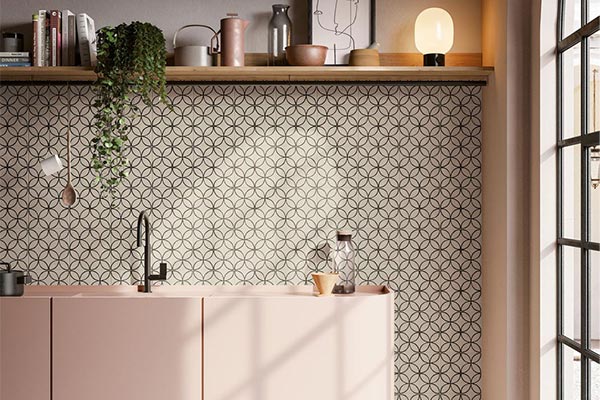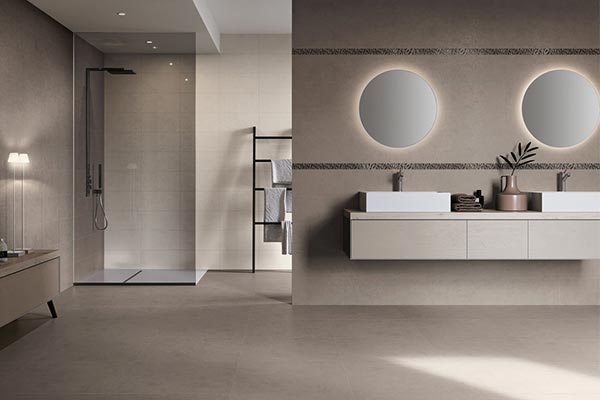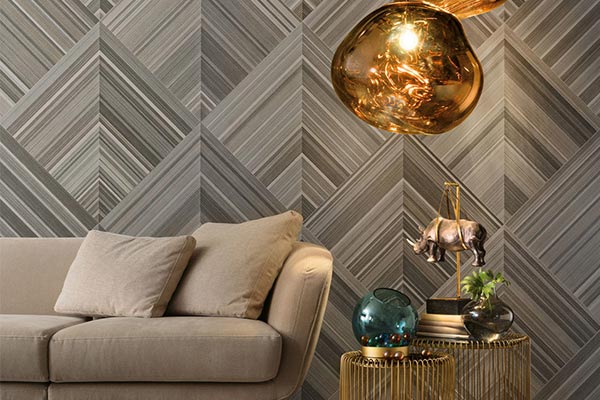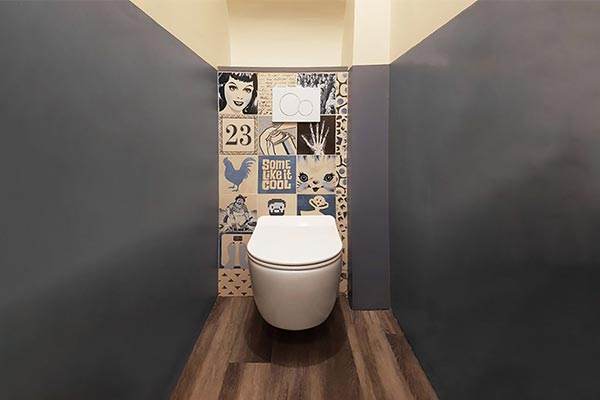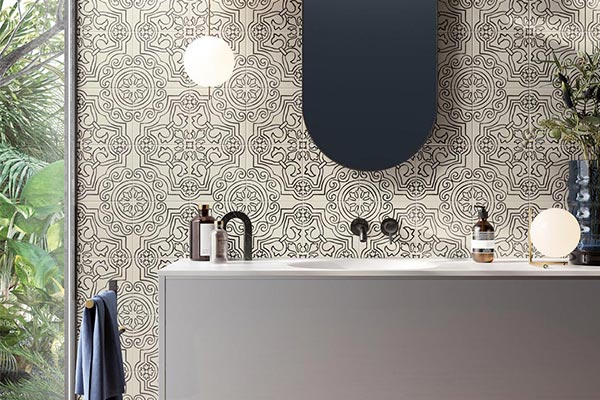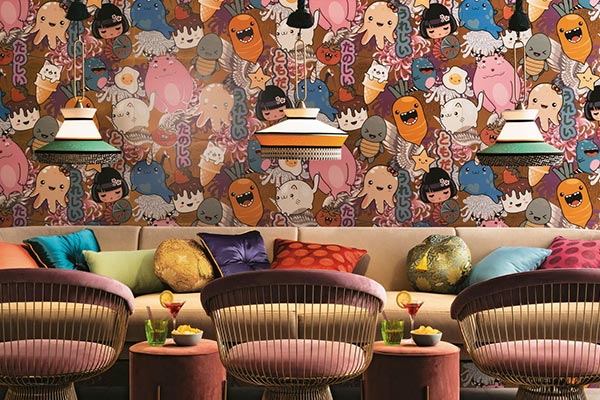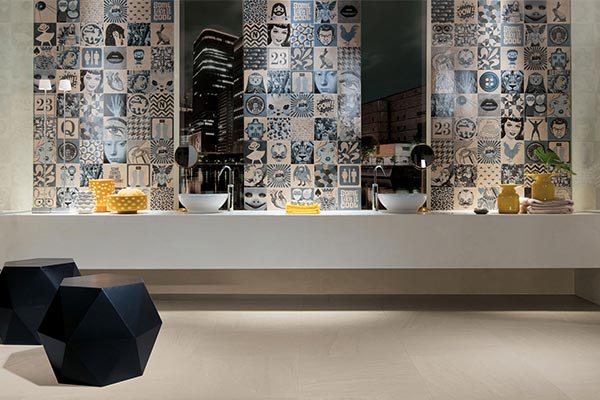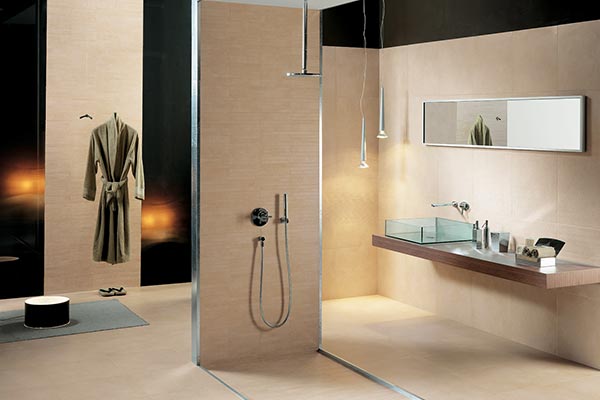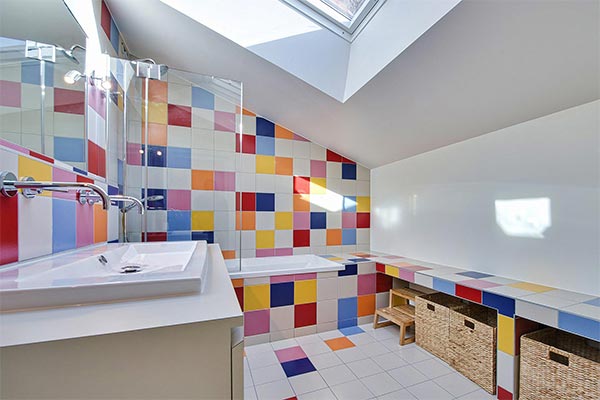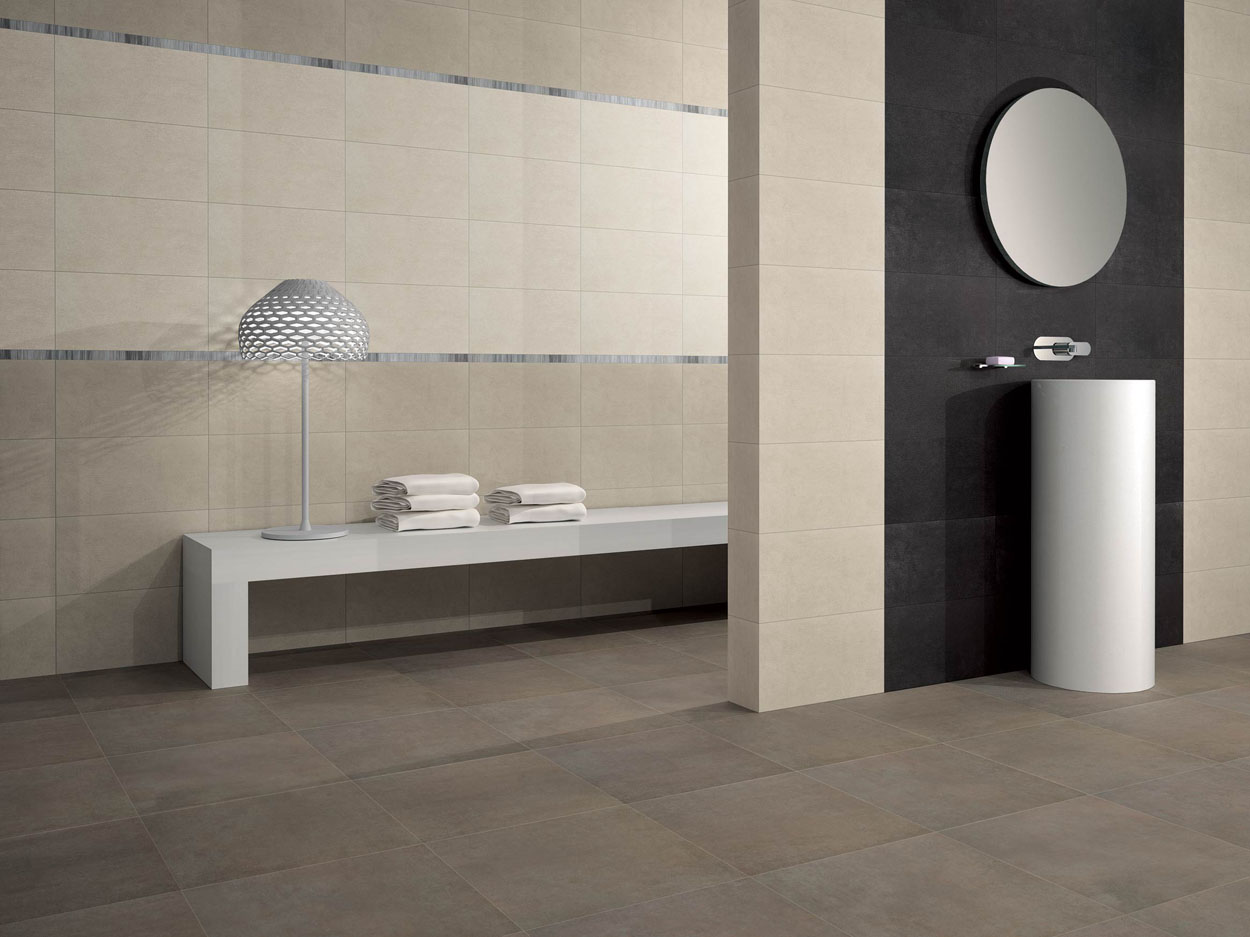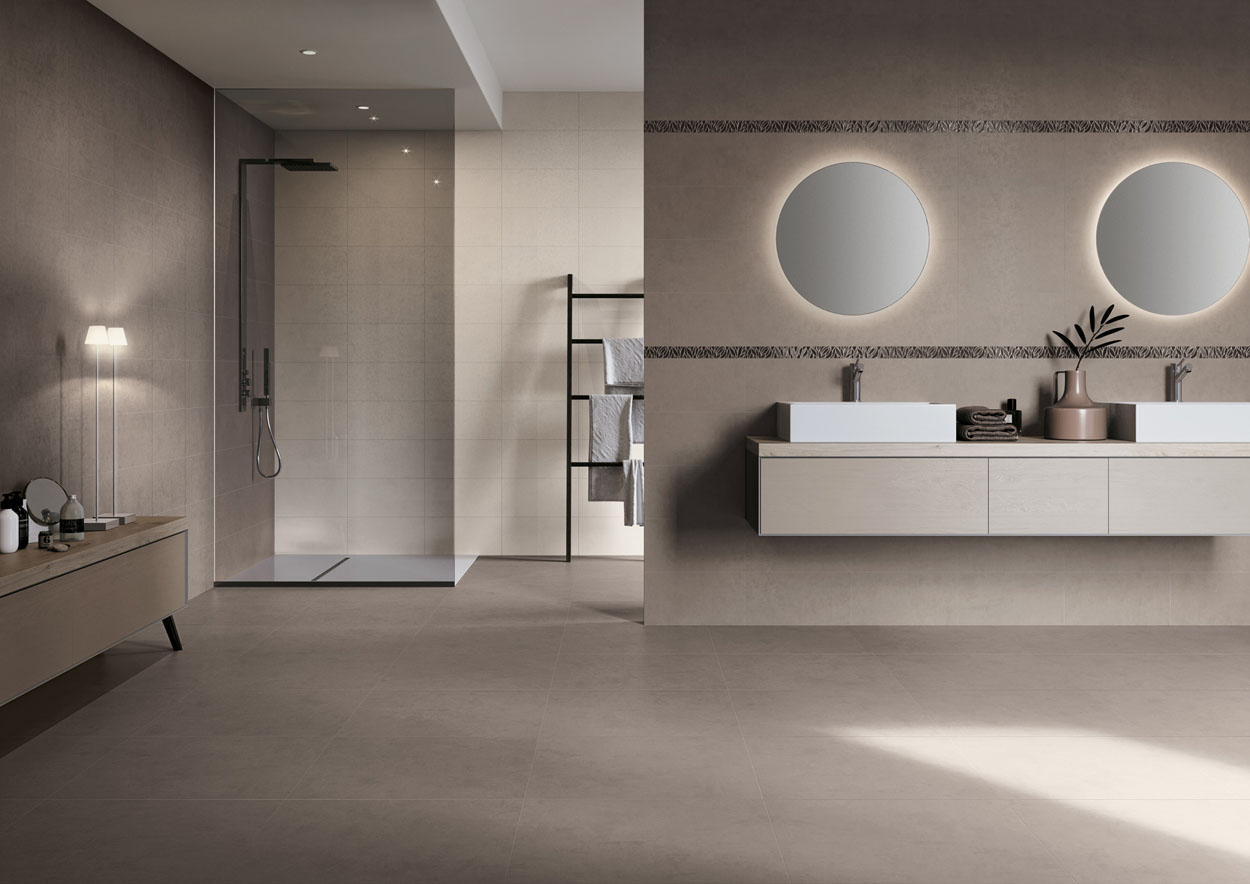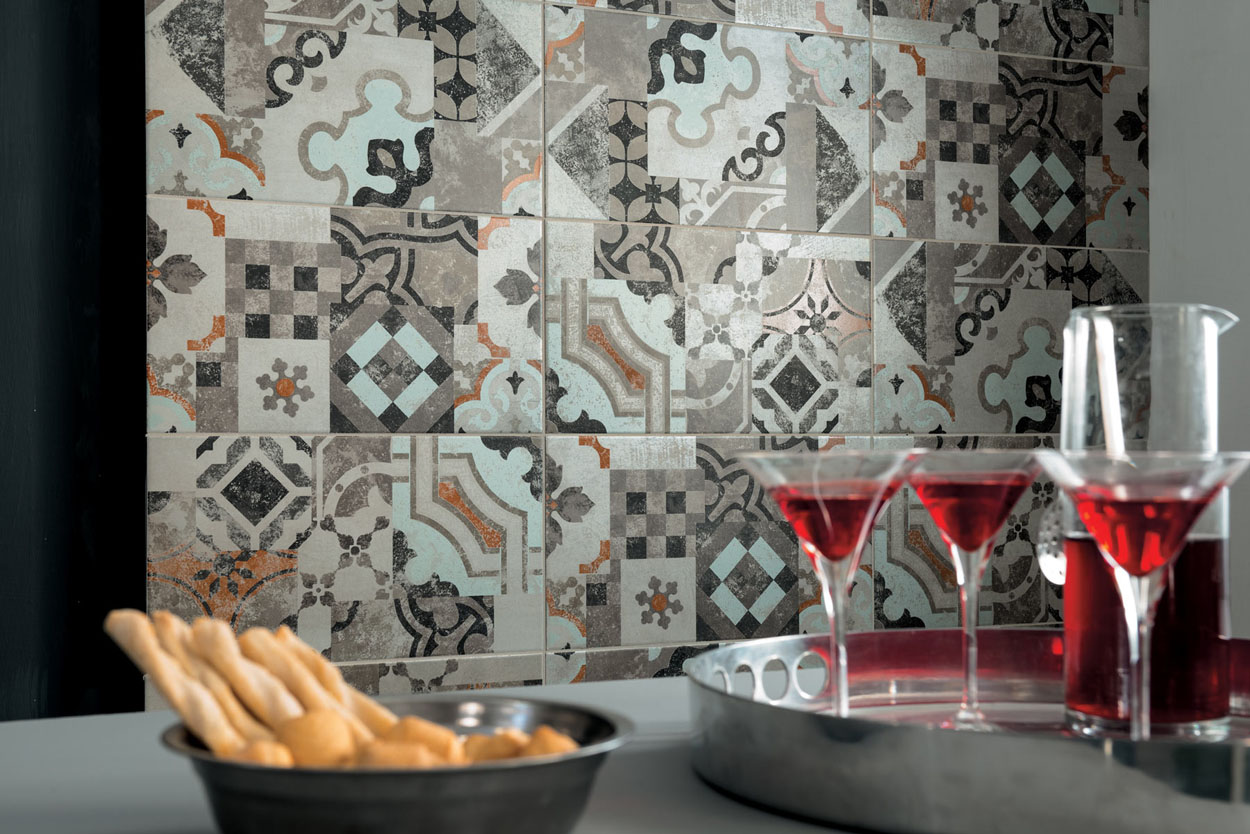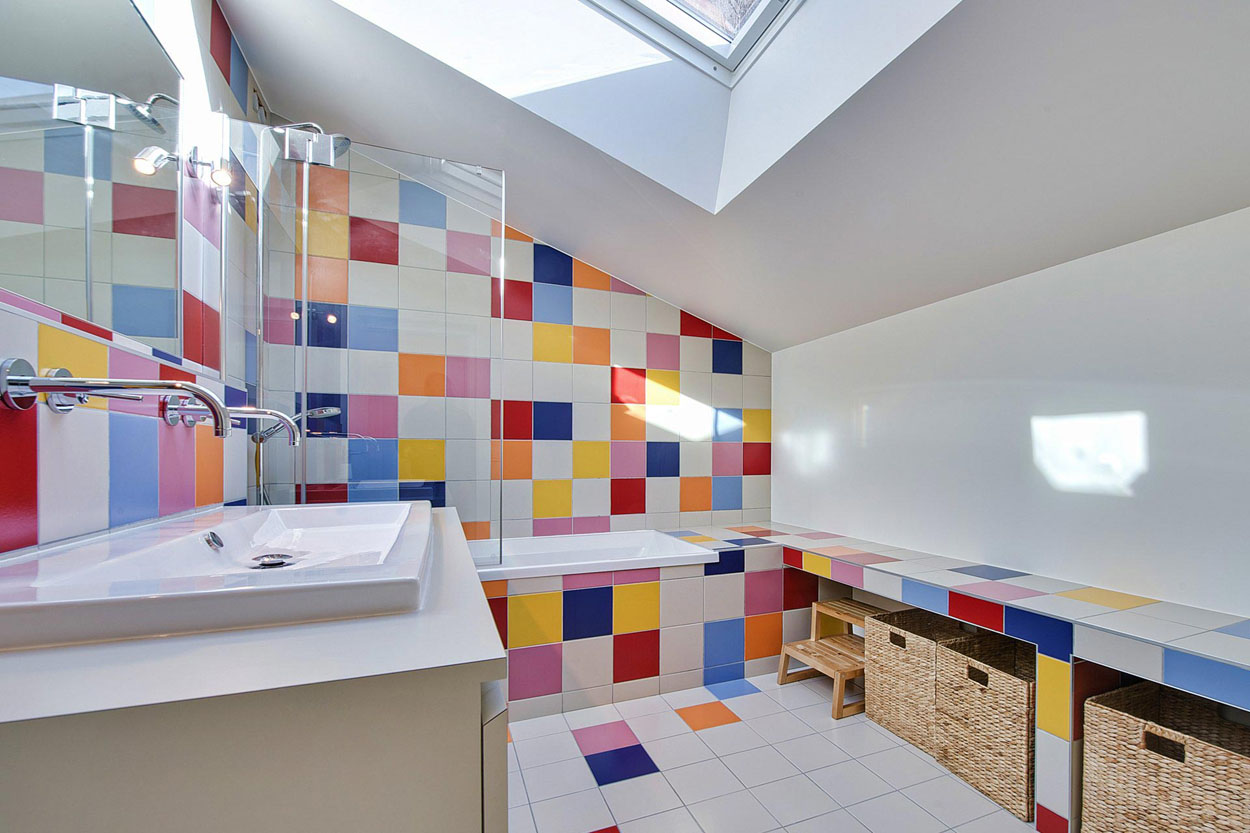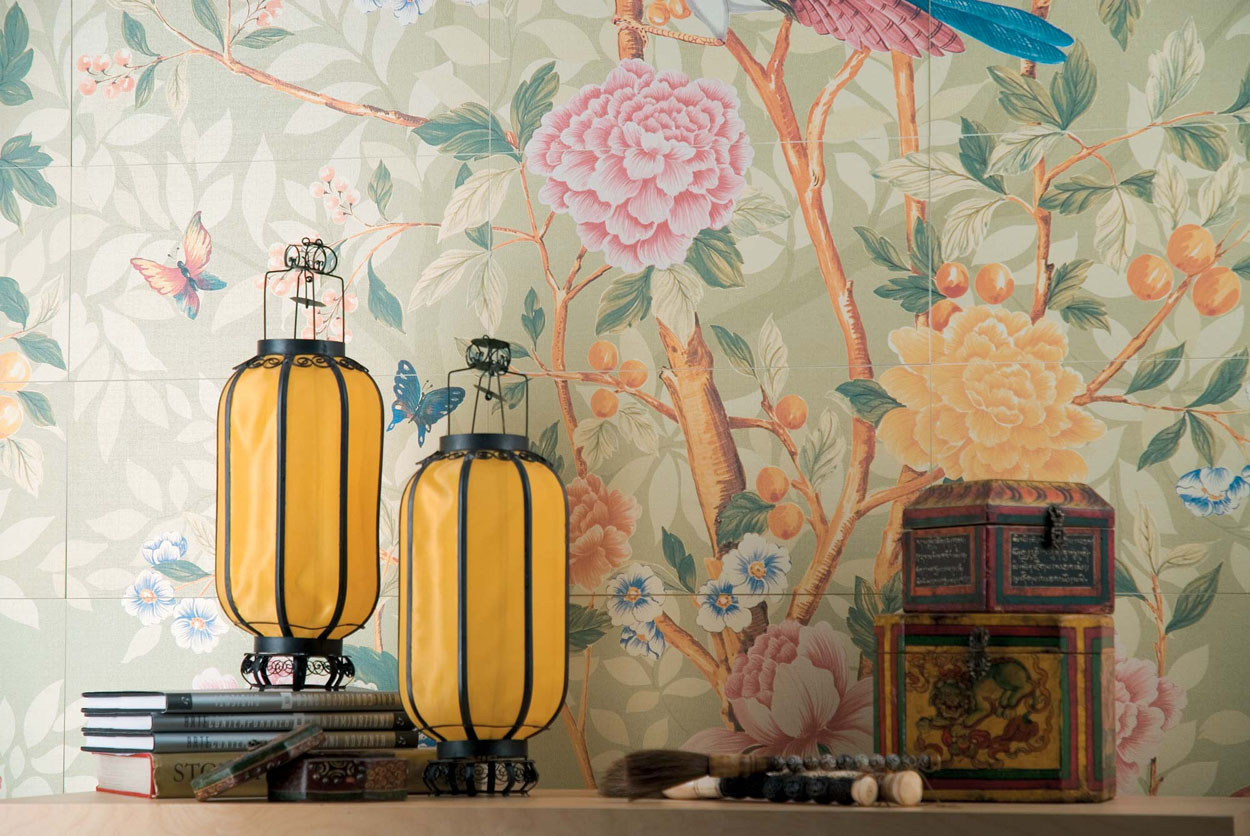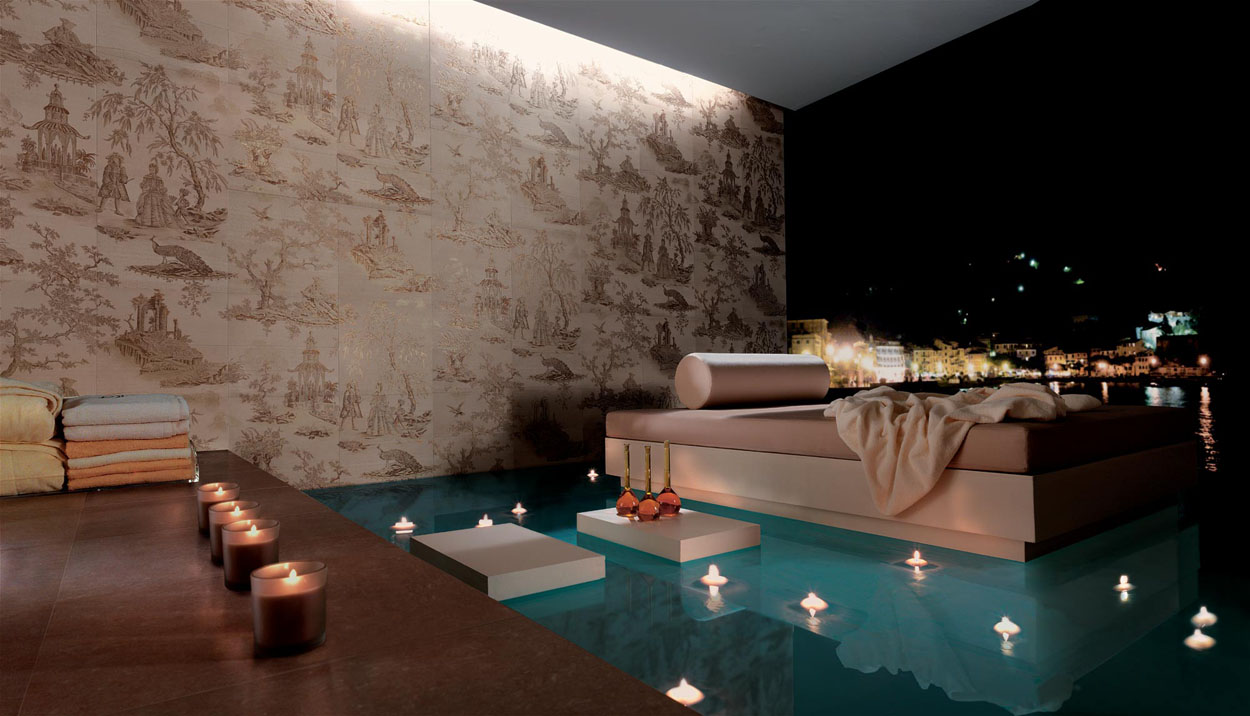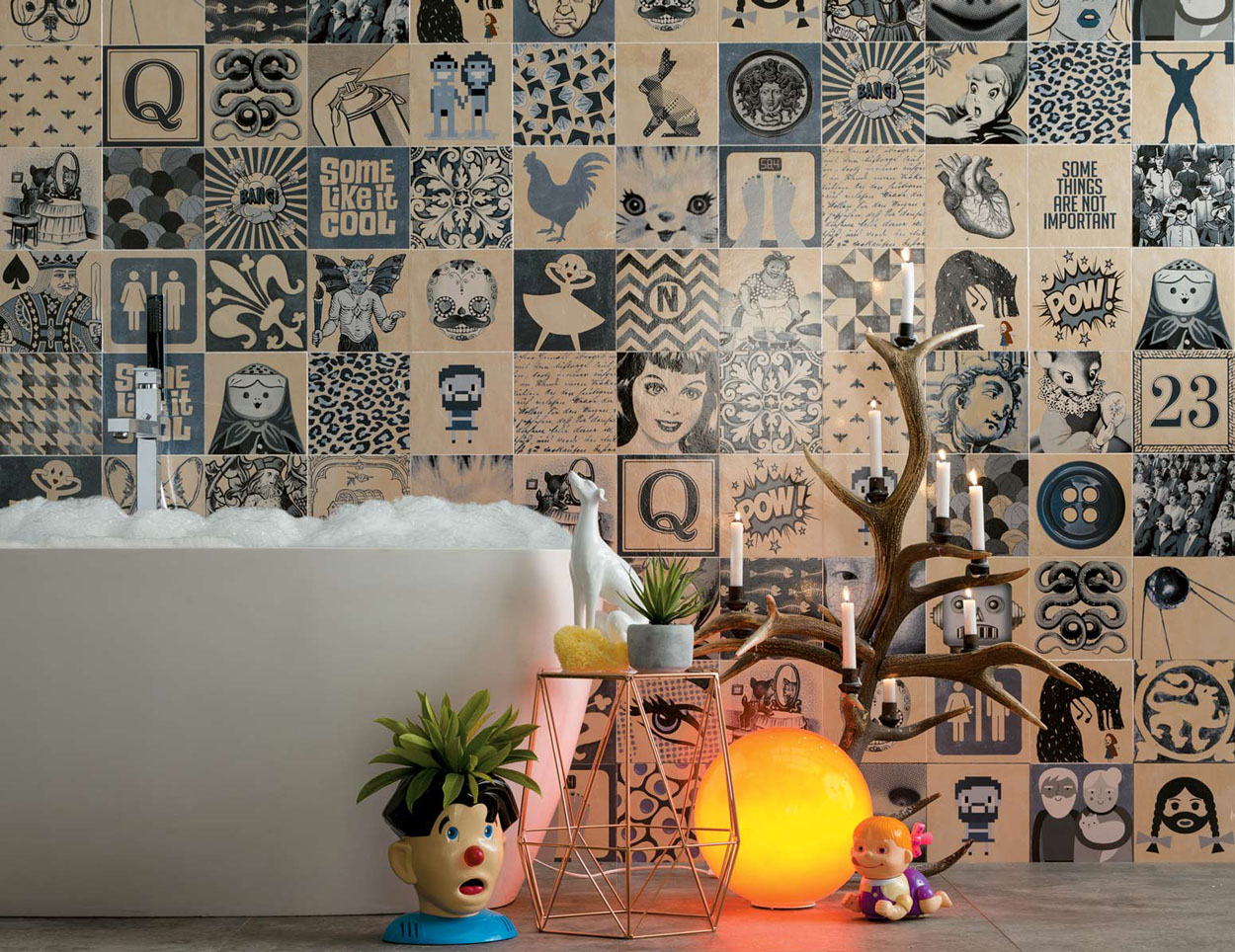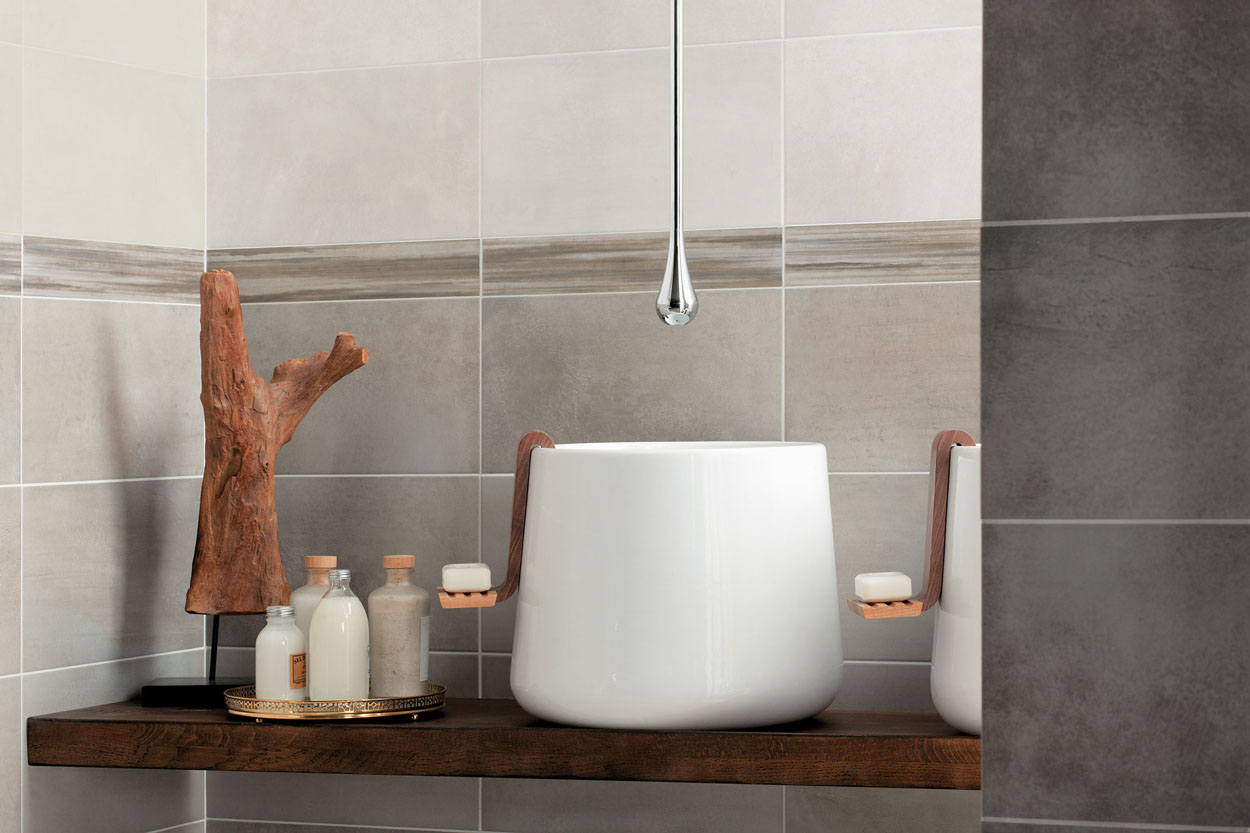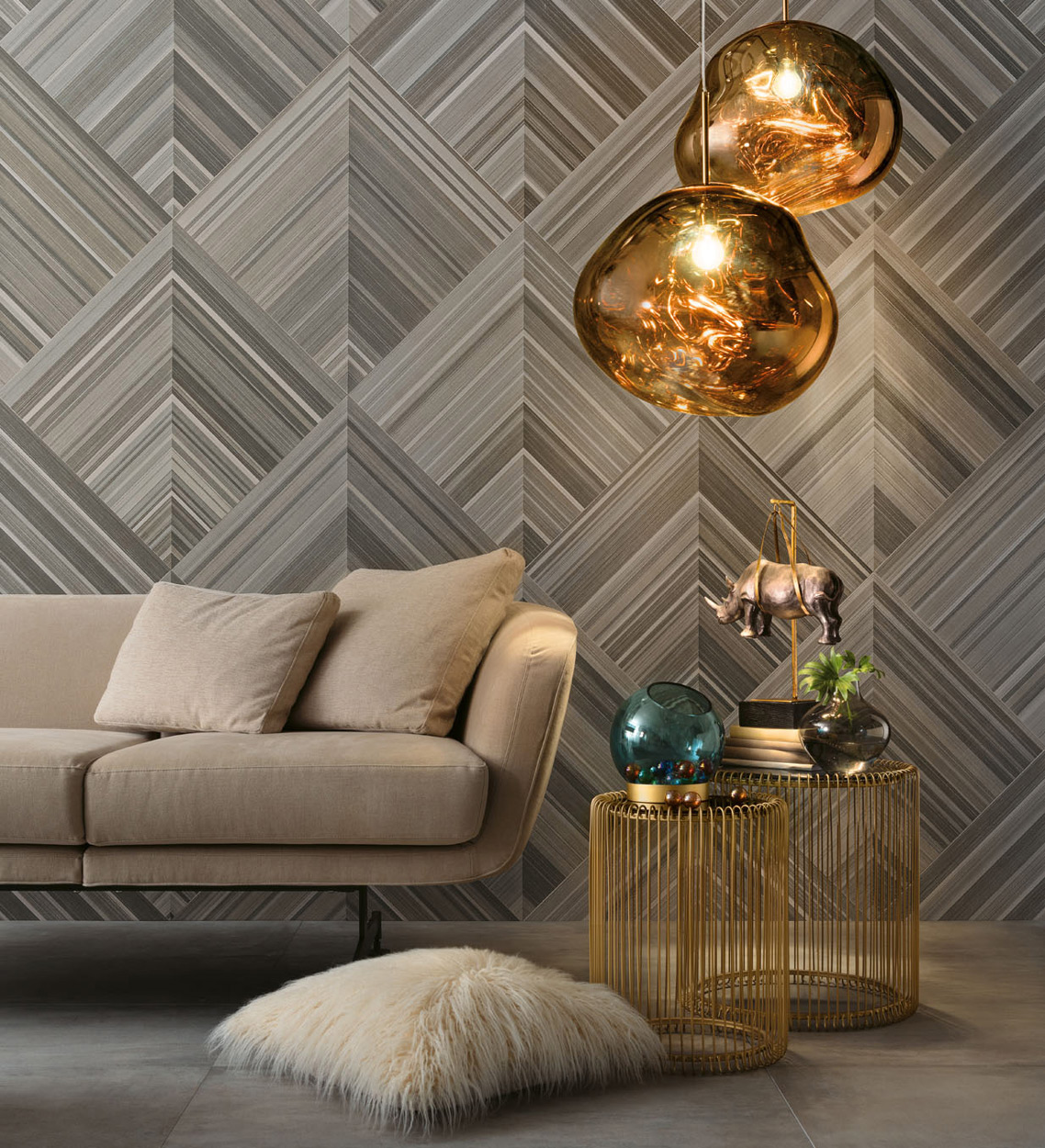The faïence tiling is a wall covering that refers, in this case, to both white body earthenware and porcelain stoneware. Often intended for installation in the bathroom, shower or even the kitchen, the presence of faïence tiles is reinforced in other rooms of the house for decorative purposes. So why deprive yourself of a wall covering that dresses walls in style and brings out the best in every style of decoration? In fact, Novoceram’s faïence reproduces many natural materials such as metal and concrete, but also includes collections with sought-after geometric and aesthetic effects.
Faïence Wall tiles
Our collections of earthenware tiles
Ceramic stoneware or earthenware: what’s the difference?
The main differences between the two materials relate to their composition and firing temperature. White body earthenware, like the Kawaii collection for example, does not have the same technical characteristics as glazed stoneware. Firstly, white body earthenware is a type of ceramic tile which, being softer and more fragile by nature, is not suitable for either floor laying or outdoor environments. As a result, it is used exclusively for wall laying inside the home, which is made easier by its lighter weight than porcelain stoneware. Because the firing temperature of white body earthenware is lower, it can contain more precious materials to create original, highly sophisticated aesthetic effects.
By contrast, porcelain stoneware faïence can be laid on both floors and walls, but also outdoors. Fired at a higher temperature, faïence en carrelage has all the technical properties of porcelain stoneware. For example, it is more resistant to water and damp because porcelain stoneware has virtually zero water absorption, whereas earthenware in white body is a little more porous, but is just as well suited.
What makes the choice of earthenware tiles the right one?
Novoceram’s faïence appears to be the ideal decorative solution for covering your walls in an elegant, modern way. What’s more, some of the more atypical faïence murale designs can give your interior a bold, unique look. The many aesthetic effects of wall tiles work wonders in decorative terms. What’s more, the technical properties of faience tiles make them suitable for a wide range of uses, as they are highly resistant to the various factors they come into contact with, such as steam, humidity and heat.
Wall tiles: what are they used for?
Once reserved exclusively for use in the bathroom or kitchen, wall tiles are now being installed in other rooms of the house, mainly for aesthetic purposes.
First of all, faïence tiles are perfectly suited to wet rooms. Bathrooms require a covering that can withstand moisture without deteriorating, and faience tiles are highly resistant to water and steam. It can even be laid in showers to create an elegant wall covering in more neutral colours. If you dare to add an unexpected touch of originality, the cheerful, cute patterns of earthenware tiles can also brighten up your bathroom or even your toilet.
Next, wall tile is intended for installation in the kitchen. The walls in this room also need to be protected from splashes, steam and heat, especially behind the hob and the sink. However, the trend is to extend these more risky areas and extend them all around the room. Novoceram’s wall tiling collections offer a wide variety of aesthetic looks that blend in beautifully with your kitchen decor.
Tiled earthenware can also be used in other rooms of the house. Available in more suitable formats, wall tiles adopt more discreet, neutral colours to match the decor of the living room, for example. Often defined as a room where comfort reigns, the living room is also a place for getting together and sharing that is intended to be warm and friendly. Novoceram has designed collections of faïence murales that embody these characteristics to perfection in order to reinforce this soft, cosy atmosphere.
The effects and colours of earthenware tiles
It goes without saying that wall tiles play an essential role in certain rooms, as they protect the walls from splashes and damp while embellishing them at the same time. As well as its functionality, particular attention needs to be paid to the style and aesthetic appearance of your walls. In fact, depending on the decorations chosen, the faience tiles can become the star piece of the decor or highlight it in a complementary and delicate way. Novoceram attaches crucial importance to the aesthetics of faïence murale so that it can match all types of project.
Firstly, although the cement tile trend had run out of steam, it is making a strong comeback in interiors and Novoceram’s earthenware reinvents this effect in a contemporary way. Different patterns have been created so that wall tiles can be easily combined with any space, whatever the decorating style. From elaborate decors and geometric designs to Japanese ‘cuteness’ and historical revisits, the choice is vast and allows for every kind of fantasy. These collections of faïence tiles with a cement tile effect or wallpaper effect make it easy to delineate spaces thanks to their original aesthetic and ultimately become a decorative asset.
For a more urban and relaxed look, faïence murale also replicates concrete. Porcelain stoneware perfectly reproduces the nuances of this material, which appeals to fans of industrial and minimalist décor. Available in more neutral colours such as brown or grey, concrete-effect earthenware tiles are the ideal covering for the living room.
Wall tiles: available formats
Novoceram wall tiles come in a variety of formats that will look great on your walls. From large formats to small rectangles, there are many possibilities for wall tiles, all of which will look great. You can choose from:
Large-format wall tiles, such as 80×80, which are particularly popular in large spaces. These sizes dress up the walls without overloading them and draw attention to the lightness.
Medium-format faïence tiles which include 45×45 cm and 60×60 cm and are so-called standard tiles that suit all spaces regardless of their size or decoration.
Rectangular wall tiles come in sizes such as 30×60 or 22.5×45 cm, which are ideal for wall mounting. This shape, less well known than the traditional square sizes, creates geometric visual effects that can produce striking results. With this in mind, earthenware tiles can be combined with a different format of floor tile, such as square or large format.
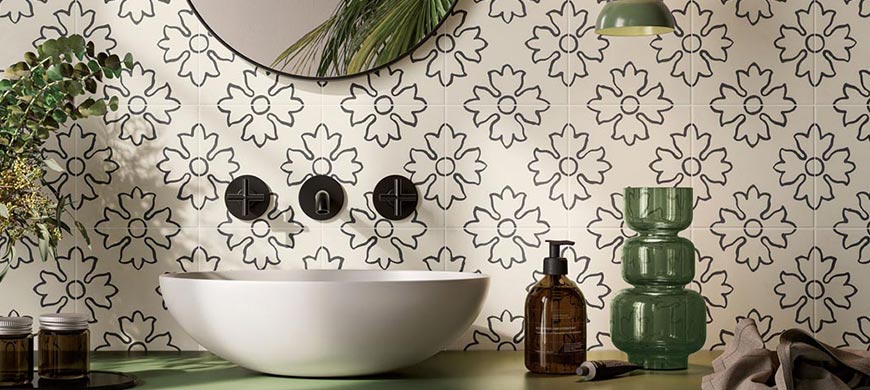
Small-format faïence murale that echoes the famous cement tiles and their traditional 20×20 cm format. This small format easily demarcates your spaces in the bathroom or kitchen, for example, to create the area for the credenza. Reinvented in a modern way, cement tile effect tiles are reminiscent of retro atmospheres while modernising the final aesthetic result.
What are the advantages of wall tiles?
While wall tiles have an important decorative role to play, adorning walls with elegant or imaginative coverings, they also have an essential and very specific function: to protect walls. To do this, the two technologies, white body and porcelain stoneware grouped together under the term faience tiles, must have the right technical properties for the stresses it has to cope with.
The first advantage of faïence tiles is that they are highly resistant to moisture, water and steam. It is made from low-porosity materials and absorbs virtually no water. For this reason, wall tiles are suitable for use in wet rooms such as toilets and bathrooms, where they can even be laid in the shower without any problem.
Then, cleaning and maintaining wall earthenware is anything but difficult. Firstly, because porcelain stoneware is not very porous, it doesn’t absorb stains. As a result, even stubborn stains can be easily removed with hot water. Given that faience tiles are also very hygienic, they are ideal for kitchens, even professional kitchens, which often require impeccable hygiene.
Faience tiles have excellent heat resistance. Porcelain stoneware offers a degree of safety, as it cannot burn. What’s more, when it comes into contact with hot objects, its aesthetic appearance does not change and, above all, it does not deteriorate. This technical property makes wall tiles the ideal covering for the kitchen.
Tiles
Tiled earthenware or white body earthenware: what’s the difference?
White body earthenware and porcelain stoneware are both suitable for wall mounting, but porcelain stoneware can also be used as a floor covering thanks to its technical properties. In this way, you can erase all the boundaries between floor and wall to create a harmonious continuity in your space. However, faïence in white body can allow you to design more elaborate aesthetic effects by using materials of a more precious nature. What’s more, white body tiles are extremely functional and practical for wall mounting, thanks to their lighter weight.
How do I maintain wall tiles?
Maintaining Novoceram faïence is simple and effective, especially on a daily basis. To keep it looking as good as new, it’s a good idea to look after it every day. The advantage is that cleaning is easy and only requires hot water. If necessary, you can also use aggressive products developed by professional brands, which may sometimes be necessary for more stubborn stains.
How do I choose bathroom tiles?
To choose the right tiled earthenware model for your bathroom, it’s important to take your room’s decor into consideration. If your atmosphere is neutral and contains a few elements that evoke the industrial or elegant style, a faïence murale in softer colours is recommended because its timeless look easily matches all decorations, even if you decide to give your room a makeover. On the other hand, for an original and surprising effect, the patterns of Novoceram tiles will enhance your bathroom while becoming a decorative element in their own right.
Wall tiles
Earthenware tiles offer a wealth of decorative possibilities thanks to the varied aesthetic effects they reproduce. Geometric patterns, classic designs and sober or vibrant colours go perfectly with any interior, creating precious and unique spaces. Here are a few examples of projects using Novoceram earthenware to inspire you... We look forward to receiving your photos!
